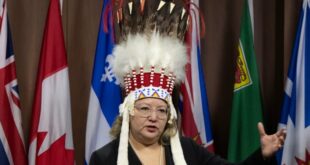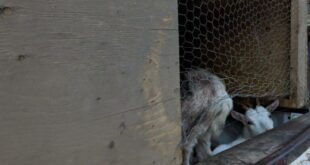Lester B. Pearson is most likely spinning in his grave this week.
Lester B. Pearson — Canada’s 14th prime minister, Nobel Peace Prize winner and Liberal icon — is most likely spinning in his grave this week.
For a number of reasons.
You probably know him as the venerated, even celebrated, architect of peacekeeping, that cherished instrument of Canadian political and foreign policy, which in the current global context seems quaint and uncomplicated.
What you may not know about him is perhaps more important, especially in light of the geopolitical machinations and the online and editorial wailing and gnashing of teeth associated with Canada’s refusal to be pinned down to a specific NATO defence spending commitment.
- As NATO firms up military spending target, Canada is trying to broaden what counts: sources
- NATO’s 2 per cent military spending benchmark is ‘self-evident’: Finnish president
You see, when the North Atlantic Treaty was drafted in the late 1940s, Mike (as he was known informally) Pearson was one of the people holding the pen.
In fact, he was, according to historians, responsible for Article 2 of the landmark agreement that forged an uneasy — and at the time, increasingly restless — group of wartime allies into the instrument of geopolitical power that it is today.

‘The Canadian article’
The clause places the burden upon members to “contribute toward the further development of peaceful and friendly international relations by strengthening their free institutions, by bringing about a better understanding of the principles upon which these institutions are founded,” and to “encourage economic collaboration between any or all” of the allies.
What became known derisively by allies that wanted NATO to be an exclusively military club as “the Canadian article” took a while to become accepted.
Alliance leaders back then preferred to count tanks and ships rather than debate and deal with the root causes of war, namely politics and economics.
“Ultimately, Pearson and his colleagues laid the foundation for the development of NATO in the non-military field and, more broadly, in the development of political consultation between members,” said a research piece in NATO’s declassified online archive.
There’s irony in the notion that Canada’s minister of external affairs, as the title was then, is responsible for laying the foundation of the politics that largely consume any mention of the alliance in this country today.
Inarguably, NATO has gone through many evolutions in its almost 80 years of existence.
But the knitting together of military, political and economic expectations has been a constant source of pain for successive Canadian governments, increasingly so when you consider how the definition of “reliable ally” is being viewed through the prism of the economic bottom line.
Failing to meet the 2% bar
The notion that nations must spend two per cent of their economic wealth on their militaries to be considered serious partners consumes much political oxygen and has led to some interesting contortions. Witness recently, as CBC News reported, the effort by Canadian officials to broaden the definition of what’s counted under the metric.
Politically, it irked allies, according to defence officials, most notably in the United States, which has consistently opposed the idea of counting spending on space, cyber and artificial intelligence research as part of getting to the NATO goal.
Pearson, whose view that Canada had a useful and constructive role to play as a middle power on the international stage — a sense forged in the cauldron of two world wars — would likely be horrified at the headlines and the toxic Twitter fallout of the Liberal government’s refusal to commit to the two per cent figure.
Newly released figures from NATO peg Canada’s contribution at 1.38 per cent of GDP.
“There’s lots of different math that can be applied in different ways,” Prime Minister Justin Trudeau said at the conclusion of the NATO summit, where Canadian officials afterward insisted that the issue of the metric wasn’t raised with them by any allies.
“We’re now behind only the U.S. and Germany in terms of real new dollars invested in defence since 2014, according to NATO’s own calculations, so we have invested significantly and we will continue to invest even more in defence.”
He insisted the reality is Canada continues to step up, continues to invest more, and Canadians are there “to contribute to the world in meaningful ways and will continue to be as we continue to advance in increased defence spending.”

Spending hasn’t kept pace
Interestingly, David Perry, vice-president of the Canadian Global Affairs Institute, said the Liberal government would be closer to the NATO benchmark if it was spending money that it has already laid out in its 2017 defence policy.
“The anticipation in ‘Strong, Secure and Engaged’ was that we would be spending I think another five to six billion in rough numbers, more than what we’ve spent now on new equipment including warships, drones and fighters,” said Perry, whose organization hosts conferences that are sometimes sponsored by defence contractors.
“The economy grew substantially and our defence spending has increased, but it has not kept pace with the economic growth of the country.”
Steve Saideman, one of the country’s leading experts on NATO at Carleton University in Ottawa, has long complained the two per cent is “BS metric” and pointed to the fact that the latest figures put Greece ahead of the United States in terms of economic investment.
“I dare you to find a Greek flag on any NATO placemat depicting forces in the Baltics,” he said. “It’s just not there, right? It’s consistent with them not showing up in Afghanistan.”
Saideman said some of the countries doing the complaining behind closed doors, such as Germany, can boast larger militaries, but he wondered “how many of their ships can actually sail, how many of their planes can actually fly and how many of their tanks can actually drive, given they have a readiness problem that probably makes our readiness look pretty good.”
Even still, allied officials speaking on background to CBC News following this week’s summit said there would be no immediate or direct consequences for not meeting the newly agreed-upon target of spending “at least two per cent of GDP.”
However, absent a firm commitment, “Canada will find itself marginalized, not invited to meetings and discussions, and its voice increasingly less heard,” said one official familiar with the file who cannot be identified because of the diplomatic sensitivity.
Allies skeptical
Pearson would most likely be aghast.
What seems to be implicit in Trudeau’s remarks is that his government is prepared to spend more, but is awaiting the results of its defence policy review to say how much more.
There is, however, skepticism among allies who’ve watched a parade of announcements and a flurry of spending promises only to see little delivered.
“There’s a real problem with our spending, but it’s not about two per cent,” said Saideman. “It’s about: We’re making promises, and it’s not clear that we’re providing the cash for the promises.”
When U.S. President Joe Biden visited Ottawa last spring, the objective was to wrestle out of the Liberal government a specific timeline for spending the $38 billion that has been set aside to modernize the North American Aerospace Defense Command (NORAD) over two decades.
It took a year for Canada to spell out how it was going to organize the NATO brigade it’s leading in Latvia — something alliance officials in Brussels had become increasingly anxious about.
“There’s a challenge that Canada likes to have an outsized vision of itself as having all these great values, and being a really well-loved country in the world, but that doesn’t buy a whole lot if you don’t show up, if you don’t show up with stuff, with a plan, with purpose,” said Saideman
“And I think one of the challenges in Ottawa is that the folks in government are mostly aiming at trying to maintain things as they are, they’re not thinking too far down the road.”
ABOUT THE AUTHOR
Murray Brewster is senior defence writer for CBC News, based in Ottawa. He has covered the Canadian military and foreign policy from Parliament Hill for over a decade. Among other assignments, he spent a total of 15 months on the ground covering the Afghan war for The Canadian Press. Prior to that, he covered defence issues and politics for CP in Nova Scotia for 11 years and was bureau chief for Standard Broadcast News in Ottawa.
*****
Credit belongs to : www.cbc.ca
 Atin Ito First Filipino Community Newspaper in Ontario
Atin Ito First Filipino Community Newspaper in Ontario






